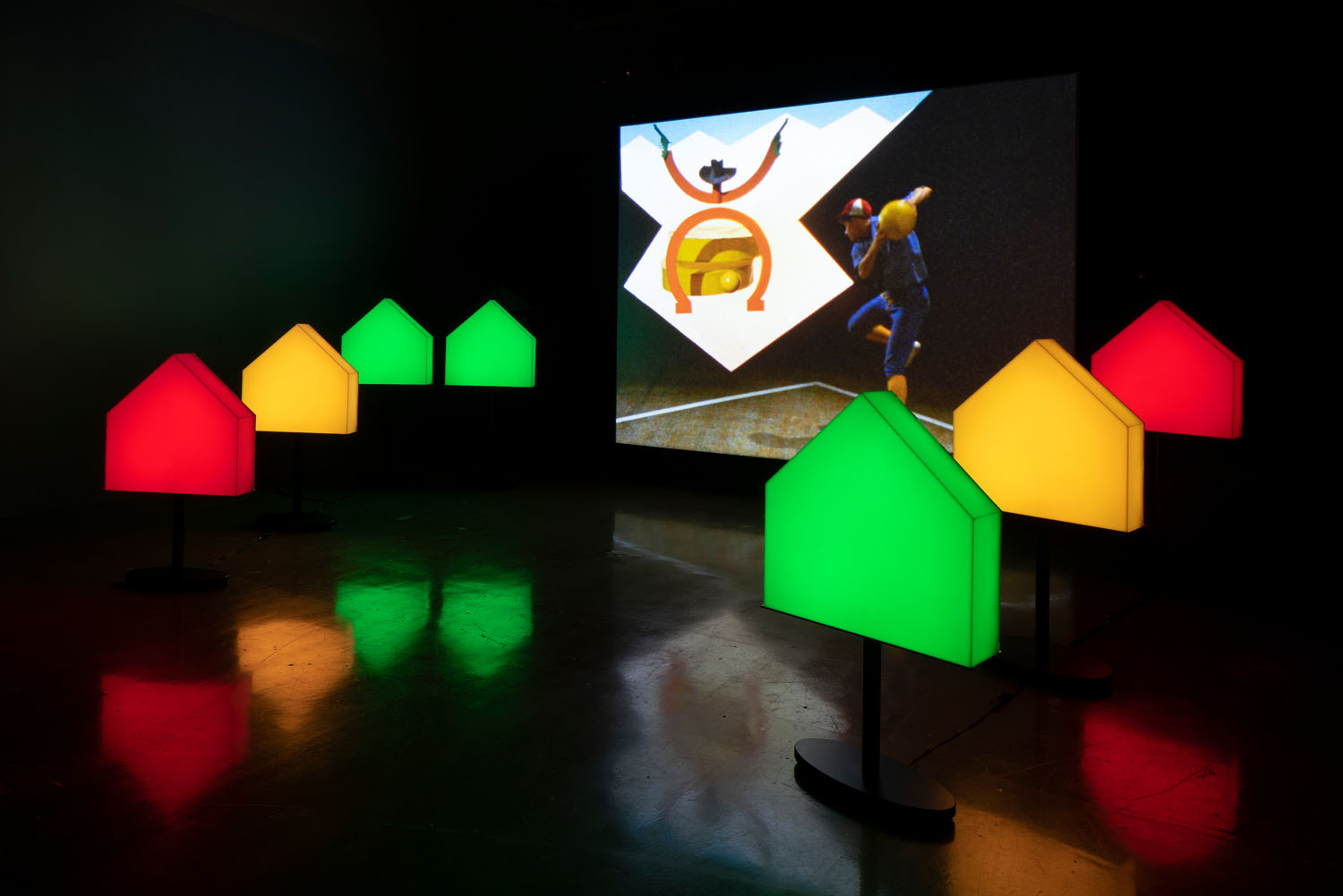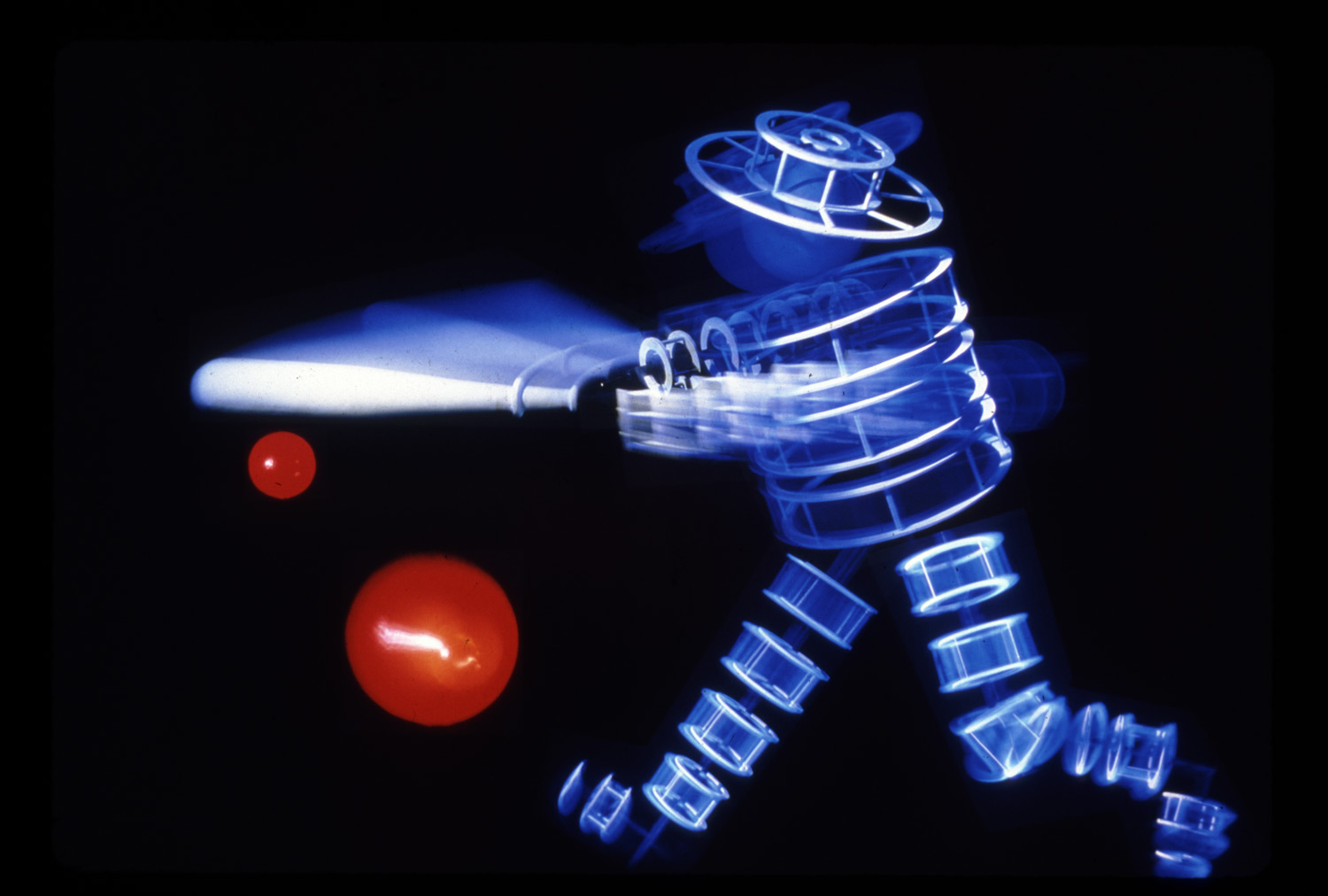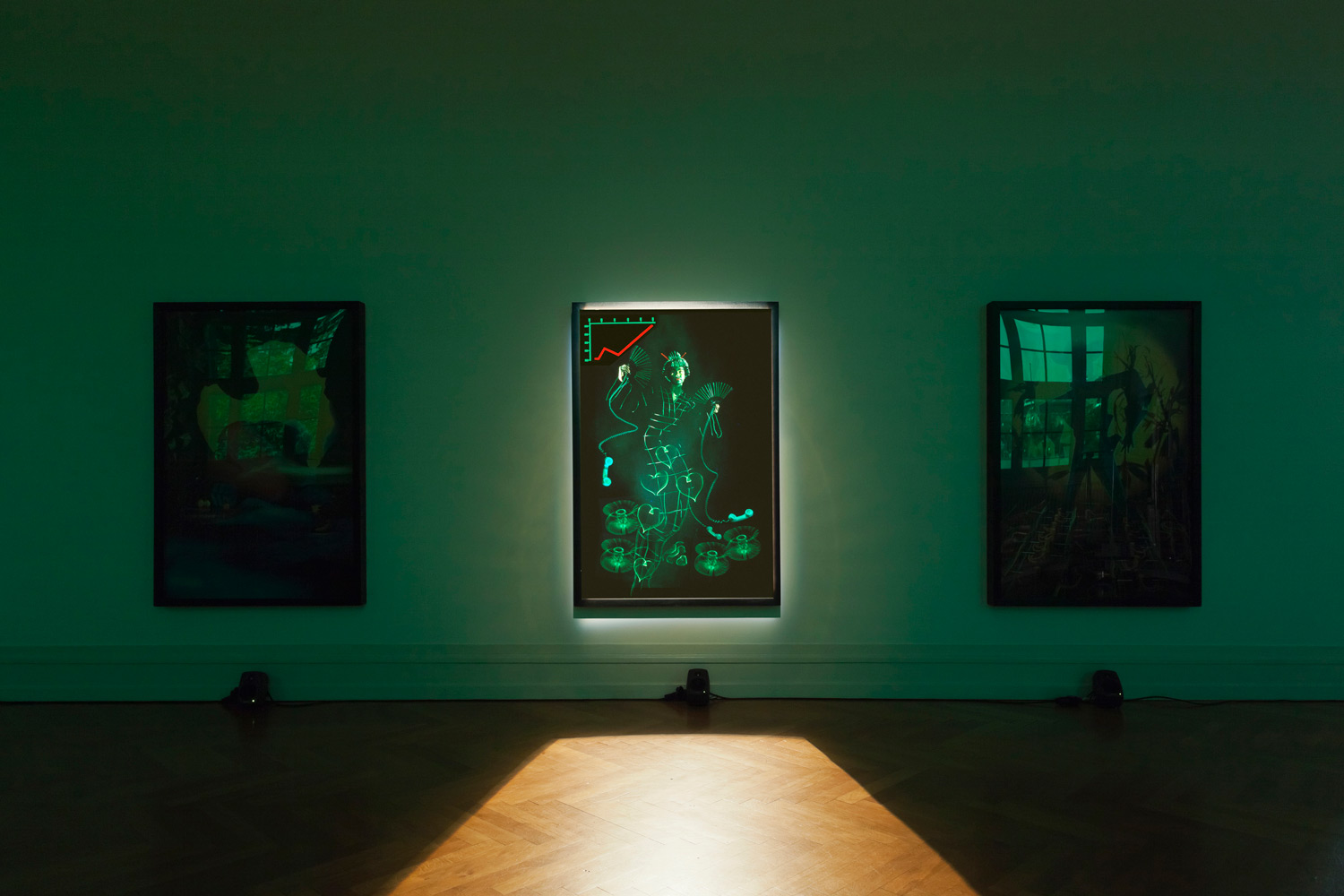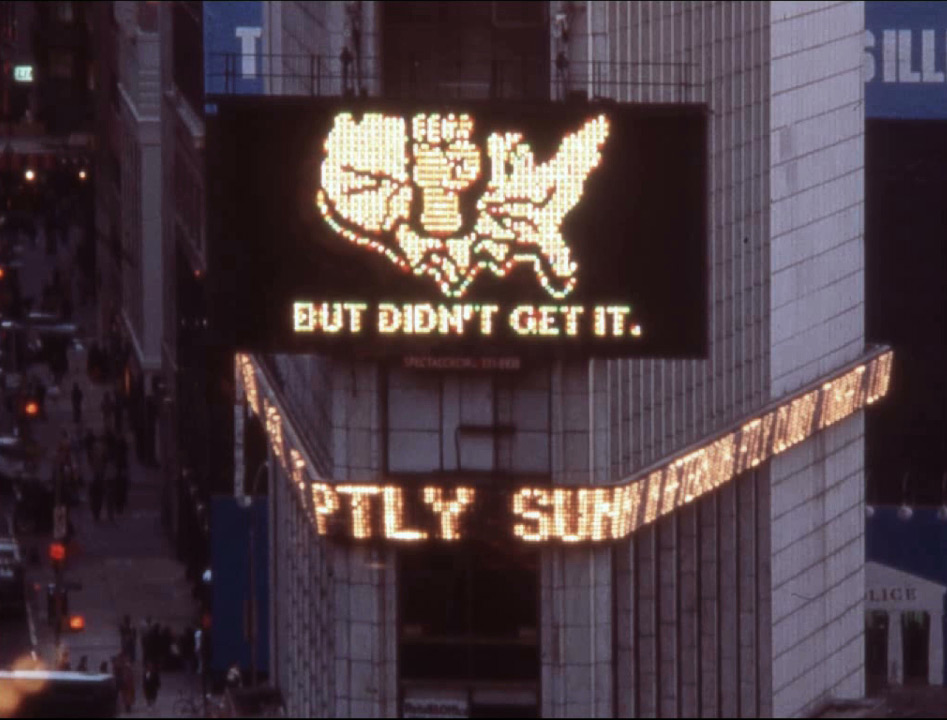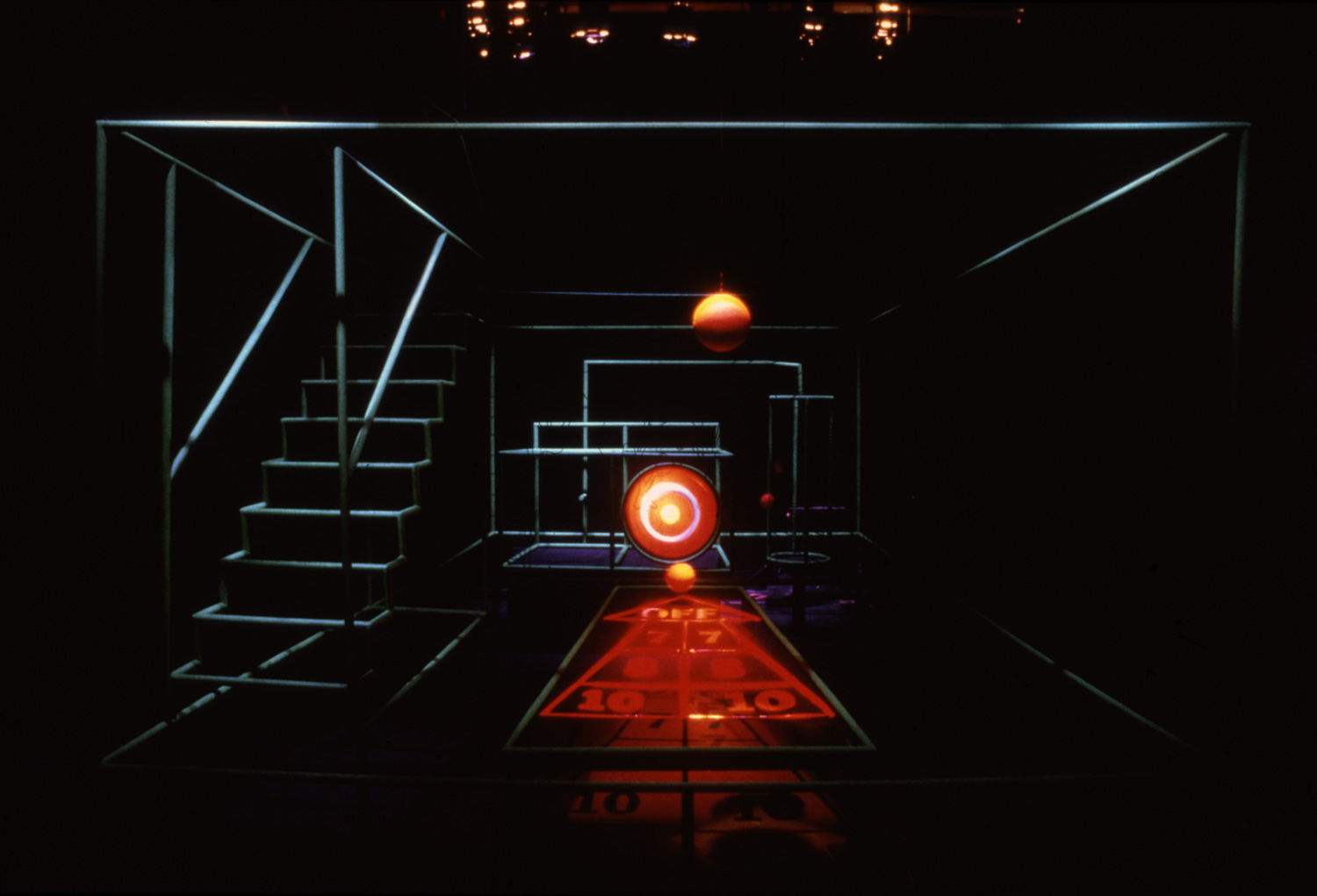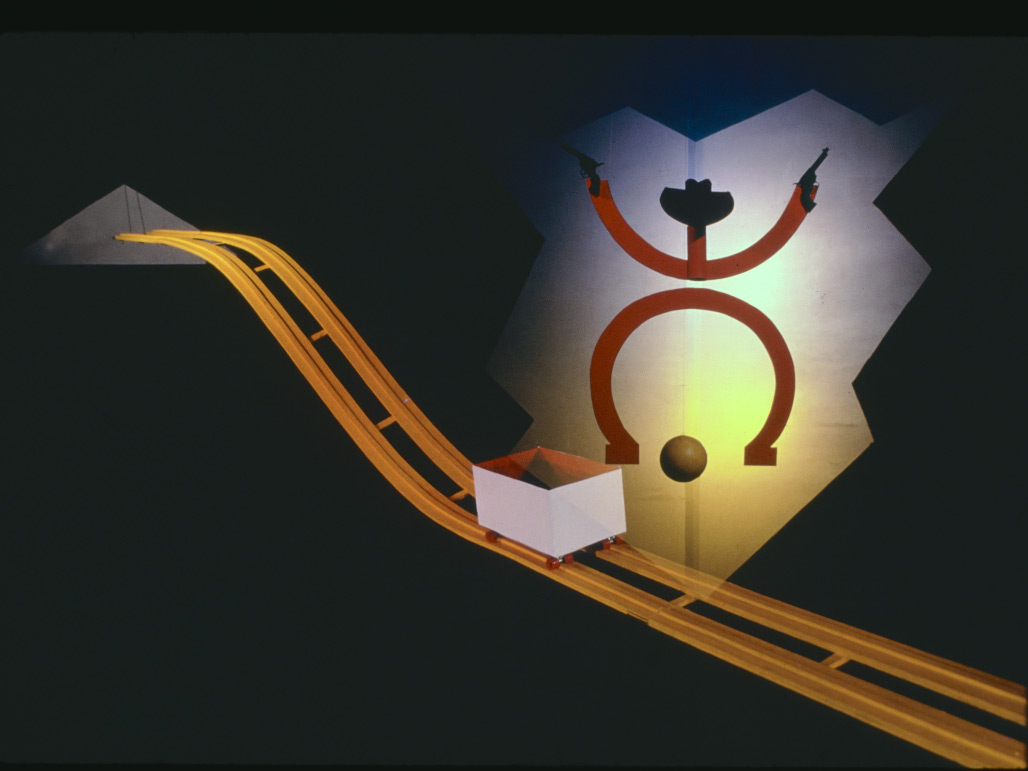INSTALLATION
Ericka Beckman: Double Reverse
MIT List Visual Arts Center
Installation of four films: You the Better, Switch Center, Tension Building, and Cinderella
2019
Description:
The exhibition presents four moving-image installations made over thirty-five years, providing the first opportunity for US audiences to survey her work. In You the Better (1983), a group of uniformed players engage in a series of enigmatic ball games, futilely betting and competing against a house that always wins. Cinderella (1986) presents a feminist restaging of the titular fairy tale alongside a parallel commentary on the legacy of industrial manufacturing. Shot on location, rather than in a black-box studio, Beckman’s more recent works integrate the spatial politics of industrial and other purpose-built architectures. Switch Center (2003) is a kind of post-Soviet, post-industrial ballet filmed in a defunct water treatment plant outside Budapest. In Tension Building (2016), Beckman relates the recurring design elements of stadium architecture to the pageantry surrounding sporting events and to political ideologies that support competition as spectacle. The selected works underscore Beckman’s ongoing interest in the connections between games and gambling, conditions of labor, and larger economic structures.
More about Ericka Beckman: Double Reverse
Nanotech Players
Installation of 60″x40″ Type C-prints with computer controlled lighting and audio.
1989
Description:
“Through a series of color photographs and corresponding light- and sound-cues, Ericka Beckman transformed a room in this gallery into an uncommon environment that demonstrated the connection between technological and human learning. Each of the five large C-prints features one of the “Nanotech” players, hybrid creations of light and motion (captured by prolonged camera exposures), which resemble proposed robot designs from the ’50s… The artist set up the room as an arena of the imagination, utilizing various visual clues and symbols. Sequential movement was implied through a specific ordering of particular sounds transmitted though speakers.” — J. Schwendenwein, ARTFORUM (October, 1988)
More about Nanotech Players
Boundary Figures
Installation of 60″x40″ Type C-prints with computer controlled lighting and audio.
1989
Description:
“If Disney made a live-action Little Mermaid, keeping all the overly bright, chipper colors of the animated version but adhering faithfully to Hans Christian Andersen’s cruel original tale, a scene like the one in Ericka Beckman’s Boundary Figures photograph might appear. The crumpled feminine figure, laid out in some kind of cove and wearing something pink and scaly, might be the mermaid after she’s sacrificed herself for love. The photograph, made by smart, genre-bending Beckman in 1989, hangs as one in a series of three at Cherry & Martin [2016]. The others include a scarecrow in shadows and an ethereal figure who’s half geisha, half jellyfish. Spotlights come on and focus on one image at a time, with specific soundtracks played for each. It’s the incredible competence with which Beckman has executed these eerie, not-quite-comprehensible situations that makes them so memorable.” — Catherine Wagley, LA Weekly (May 2014)
More about Boundary Figures
GITSO Trust
Electronic sign display
1988
Description:
“From August 1 through August 31, 1988, a 30-second computer animated message by artist Ericka Beckman will be broadcast from the Spectacolor lightboard at One Times Square. Beckman’s message titled “Advertisement for GITSO TRUST,” will run every twenty minutes, appearing within a loop of commercial advertisements.
Beckman’s message is an advertisement for a fictional Japanese corporation, “GITSO TRUST,” that is “here to help manage America’s future.” The message, which uses images of tractors standing abandoned in a field and a red sun with the GITSO TRUST logo rising over America, reers to the farm crisis in America as well as the increasing control of technology by Japanese industry. It reminds the viewer of America’s domestic difficulties and the growing influence of Japan on our economy.” — The Public Art Fund Inc. press release, July 1988
More about Gitso Trust
Memory Core
Installation with synchronized lights and audio
1983
Description:
“To date, Ericka Beckman has presented her ideas mainly in the context of film. In her installation, which flashes on and off, the viewer sees a cowboy referred to as the Bandit, who is made of horse shoes meeting at the waist with a six shooter in each hand and cowboy hat floating between, where the head should be. This figure is seen through a hole torn in a wall separating it from the viewer. The room in front of this is black with gold balls dangling from the ceiling by elastic strings. The bandit is lit from behind by a translucent wall of white light. Everything is figuratively animated by a repeating sound track that features a shrill voice taunting the listener with a catchy, but unsettling, rock melody. The sound of gun shots gives emphasis to the beat. The whole installation functions as a kind of warning sign/logo whose subject really is the equivocality of social signs: is the Bandit Robin Hood or Ronald Reagan? Are we to side with him or fear him? Is he the object of our fear or a sign to remind us to watch out? Its essential ambiguity suggests dependency on a surrounding social context.” – James Casebere
More about Memory Core
Grand Galop
Installation, synchronized audio and lights
1983
Description:
“To date, Ericka Beckman has presented her ideas mainly in the context of film. In her installation, which flashes on and off, the viewer sees a cowboy referred to as the Bandit, who is made of horse shoes meeting at the waist with a six shooter in each hand and cowboy hat floating between, where the head should be. This figure is seen through a hole torn in a wall separating it from the viewer. The room in front of this is black with gold balls dangling from the ceiling by elastic strings. The bandit is lit from behind by a translucent wall of white light. Everything is figuratively animated by a repeating sound track that features a shrill voice taunting the listener with a catchy, but unsettling, rock melody. The sound of gun shots gives emphasis to the beat. The whole installation functions as a kind of warning sign/logo whose subject really is the equivocality of social signs: is the Bandit Robin Hood or Ronald Reagan? Are we to side with him or fear him? Is he the object of our fear or a sign to remind us to watch out? Its essential ambiguity suggests dependency on a surrounding social context.” – James Casebere
More about Grand Galop
